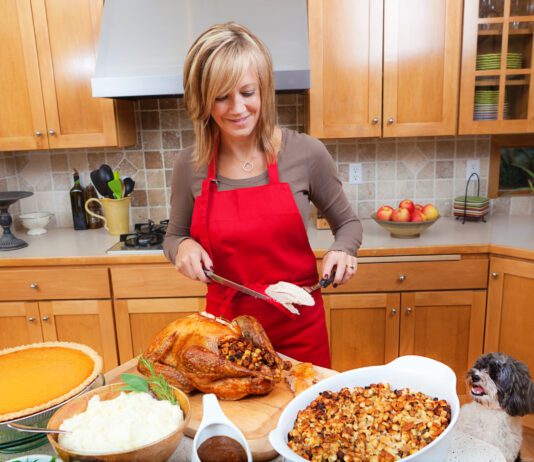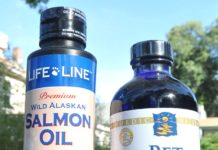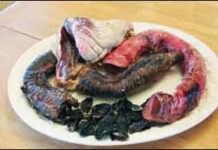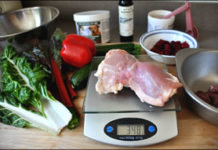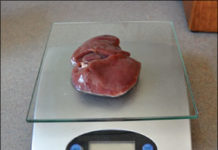Rolled-Up Welcome Mat?
No good deed goes unpunished. That’s what Pam Rowley of Upper Brookville, New York, discovered last November, when the hospital administrator who always greeted her and 8-year-old Vizsla Gunner at the start of their monthly therapy-dog visits quietly took her aside to deliver some bad news.
Celebrate with These Thanksgiving Recipes for Dogs!
Thanksgiving is a time when families gather together to enjoy good food and to remember all the things we have to be grateful for. Unfortunately, one part of our family often gets left out our dogs! It must be frustrating for them to smell all the wonderful aromas coming from the kitchen, but not be able to share in the feast. We're here to relieve that vexing situation with recipes for some healthy Thanksgiving dishes just for them.
How To Improve Your Homemade Raw Dog Food Diet Recipes
Several raw feeders contacted me after reading my homemade diet guidelines (“You Can Make It”) in July’s Whole Dog Journal issue. While their diets varied considerably, each had problems that are common with raw diets – but most are easily fixed. For example, many raw diets are high in bone, which provides calcium and phosphorus. Excess calcium can lead to serious orthopedic conditions in large-breed puppies, especially before puberty. High-calcium diets are not dangerous for adult dogs, but calcium binds other minerals, including zinc and iron, so a diet high in bone may lead to other nutritional deficiencies. Too much bone can also cause constipation.
How to Make Homemade Dog Food
It's important that the home-prepared dog food diet you feed your dog is complete and balanced
How to Make High Quality Dehydrated Dog Treats for Raw Fed Dogs
Making meals from scratch is the only way I know to have exactly what I want for my dogs no ingredients from places with spotty records for quality assurance, no multi-syllabic additives making a label longer than I like. After I covered the pet-food recall in 2007, I changed the way I eat and the way I feed my pets. For my dogs, that meant commercial products from companies I trusted, along with raw-food meals from regional sources of meat, grains, and vegetables. It wasn't a huge shift from raw to cooked when my Flat-Coated Retriever, McKenzie, started chemotherapy for soft-tissue sarcoma a few days after her seventh birthday. At the suggestion of her veterinary oncologist, I dropped the carbs, rebalanced the diet with the help of some expert advice, and started feeding McKenzie Meatloaf" to all three of my dogs."
Could a Raw Dog Food Diet Replace the Need to Brush?
Many raw dog food diet proponents claim that the nutrients and/or chemical composition of a raw diet keeps dogs from developing gingivitis or periodontitis. We’re not aware of any studies that have proven these claims, but the persistence of the anecdotal evidence of this phenomenon (to say nothing of its evolutionary success) suggest that there are dental benefits to a diet that includes raw, meaty bones.
Improving Upon Your Homemade Raw Dog Food Recipes
Bill and Marin Corby of Romeo, Michigan, feed a homemade dog food diet to their two rescued Cockapoos. Max, estimated to be anywhere from 6 to 9 years old, has been with them for three and a half years. Max weighed 32 pounds when first adopted, but his current weight is a healthy 20 pounds. Mickey was four months old and very sick when they first brought him home, as he had problems digesting his food. The Corbys switched Mickey to a raw dog food diet, and he’s now thriving at 20 months of age and 16½ pounds.
A Home-Prepared Dog Food Diet Recipe Critique
This is the debut of what we intend to be a regular feature in Whole Dog Journal: a detailed critique of a home-prepared diet. I will analyze diets that people feed their dogs and offer feedback and suggestions that might improve the nutritional value of the diet.
Feeding a Home-Prepared Diet Economically
Feeding fresh food to your dogs can help make them healthy and happy, but it can also be expensive, particularly for those with large dogs. Whether you feed a completely homemade diet or just want to improve your dog’s diet by adding fresh foods, there are many ways to reduce costs. Here are some ideas to consider...
Home-Prepared Dog Food Diet Books
Over the past few months, I've read more than 30 books on homemade diets for dogs. Many offered recipes that were dangerously incomplete; a smaller number provided acceptable guidelines but were confusing, unduly restrictive, overly complicated, or had other issues that made me recommend them only with reservations. A few were good enough to recommend without reservation. This review is about the cream of the crop: three relatively new books (one is a new edition of an older book) whose authors have taken the time to analyze their recipes to ensure that they meet the latest nutritional guidelines established by the National Research Council (NRC).
A Review of the Best Books on Home-Prepared Dog Food Diets on the Market
Over the past few months, I've read more than 30 books on homemade diets for dogs. Many offered recipes that were dangerously incomplete; a smaller number provided acceptable guidelines but were confusing, unduly restrictive, overly complicated, or had other issues that made me recommend them only with reservations. A few were good enough to recommend without reservation. This review is about the cream of the crop: three relatively new books (one is a new edition of an older book) whose authors have taken the time to analyze their recipes to ensure that they meet the latest nutritional guidelines established by the National Research Council (NRC).
Even More Frozen Raw Dog Food Manufacturer Information!
I love you, and I wonder if you even know how rare a publication like Whole Dog Journal is. On the same day that I got my Whole Dog Journal, I also got a professional “journal” issue reviewing medical research. Without exception, every article in that magazine was research sponsored by a company that made the product being evaluated. And, surprise! All the research showed wonderful results using their products! I am awestruck every time I read a review in WDJ and it is actual, objective information, not an infomercial.


